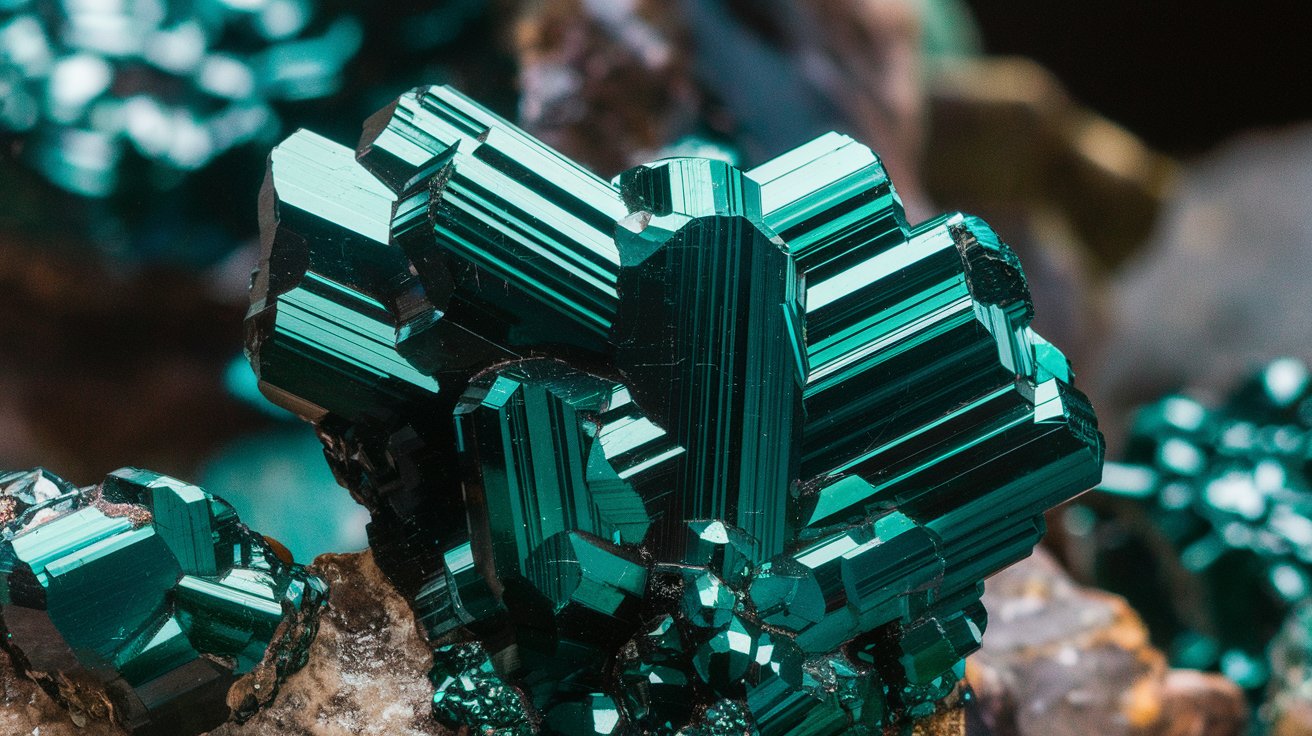
Molybdochalkos might sound like a mouthful, but this mineral holds some fascinating secrets. Found in various parts of the world, it’s a blend of molybdenum and copper, giving it unique properties. Why should you care about molybdochalkos? Because it plays a crucial role in industries like electronics, metallurgy, and even health. Imagine a world without smartphones or advanced medical equipment—molybdochalkos helps make these possible. This mineral isn't just a rock; it’s a game-changer. Ready to dive into 30 intriguing facts about molybdochalkos? Buckle up, because this mineral is more than meets the eye!
Key Takeaways:
- Molybdochalkos, a rare mineral made of copper and molybdenum, has been used in ancient coinage and weaponry. It's also valuable in modern industries for making high-strength alloys and electronics components.
- This unique mineral, with its metallic luster and historical significance, has potential applications in new technologies. It's a valuable resource for extracting copper and molybdenum, and its crystals can grow several centimeters in size.
What is Molybdochalkos?
Molybdochalkos, a fascinating mineral, has intrigued scientists and enthusiasts alike. Its unique properties and historical significance make it a subject of great interest. Let's dive into some captivating facts about this mineral.
-
Molybdochalkos is a rare mineral composed of copper and molybdenum sulfide.
-
Its name derives from the Greek words "molybdos" (lead) and "chalkos" (copper).
-
This mineral typically forms in hydrothermal veins, often associated with other sulfide minerals.
-
Molybdochalkos has a metallic luster, giving it a shiny, reflective appearance.
-
The color of molybdochalkos ranges from dark gray to black.
Historical Significance of Molybdochalkos
Molybdochalkos has played a role in various historical contexts. Its unique properties made it valuable in ancient times.
-
Ancient civilizations used molybdochalkos in metallurgy to create stronger alloys.
-
The mineral was often mistaken for lead due to its similar appearance.
-
Molybdochalkos was used in ancient coinage, adding durability to the currency.
-
It was also utilized in early weaponry, enhancing the strength of swords and armor.
-
Alchemists believed molybdochalkos had mystical properties and used it in their experiments.
Physical Properties of Molybdochalkos
Understanding the physical properties of molybdochalkos helps in identifying and utilizing this mineral effectively.
-
Molybdochalkos has a Mohs hardness of 3.5 to 4, making it relatively soft.
-
The mineral has a specific gravity of 4.6 to 4.8, indicating its density.
-
It exhibits perfect cleavage in one direction, meaning it splits easily along a flat plane.
-
Molybdochalkos is opaque, meaning light does not pass through it.
-
The streak of molybdochalkos, the color of its powder, is greenish-black.
Chemical Composition and Formation
The chemical makeup and formation process of molybdochalkos are crucial to its characteristics.
-
Molybdochalkos has the chemical formula Cu2MoS4.
-
It forms in environments with high temperatures and pressures, typically in volcanic regions.
-
The mineral often occurs alongside other copper and molybdenum minerals.
-
Hydrothermal fluids rich in sulfur contribute to the formation of molybdochalkos.
-
The presence of molybdochalkos can indicate potential copper and molybdenum deposits.
Uses of Molybdochalkos
Molybdochalkos has various applications, both historical and modern, due to its unique properties.
-
In modern times, molybdochalkos is used in the production of high-strength alloys.
-
The mineral is also utilized in the electronics industry for its conductive properties.
-
Molybdochalkos is a valuable resource in the mining industry for extracting copper and molybdenum.
-
It is used in the creation of pigments for ceramics and glass.
-
Researchers study molybdochalkos to understand its potential in new technologies.
Interesting Facts about Molybdochalkos
Here are some additional intriguing tidbits about this remarkable mineral.
-
Molybdochalkos crystals can grow up to several centimeters in size.
-
The mineral is often found in association with minerals like pyrite and chalcopyrite.
-
Molybdochalkos is sometimes used as a collector's item due to its rarity and unique appearance.
-
The mineral can be synthesized in laboratories for research purposes.
-
Molybdochalkos has been found in various locations worldwide, including the United States, Canada, and Russia.
Final Thoughts on Molybdochalkos
Molybdochalkos, a fascinating mineral, has a rich history and unique properties. Its name, derived from Greek, means "lead copper," reflecting its composition. Found in hydrothermal veins, it often appears alongside other minerals like galena and sphalerite. This mineral's striking blue-green color makes it a favorite among collectors.
Used historically for its lead content, molybdochalkos also played a role in ancient metallurgy. Today, it's more of a collector's item than a practical resource. Its rarity and beauty make it a prized specimen in mineral collections.
Understanding molybdochalkos offers insight into geological processes and the history of mining. Whether you're a seasoned geologist or a curious enthusiast, this mineral's story is a testament to the Earth's incredible diversity. Keep exploring, and who knows what other hidden gems you'll uncover!
Frequently Asked Questions
Was this page helpful?
Our commitment to delivering trustworthy and engaging content is at the heart of what we do. Each fact on our site is contributed by real users like you, bringing a wealth of diverse insights and information. To ensure the highest standards of accuracy and reliability, our dedicated editors meticulously review each submission. This process guarantees that the facts we share are not only fascinating but also credible. Trust in our commitment to quality and authenticity as you explore and learn with us.
